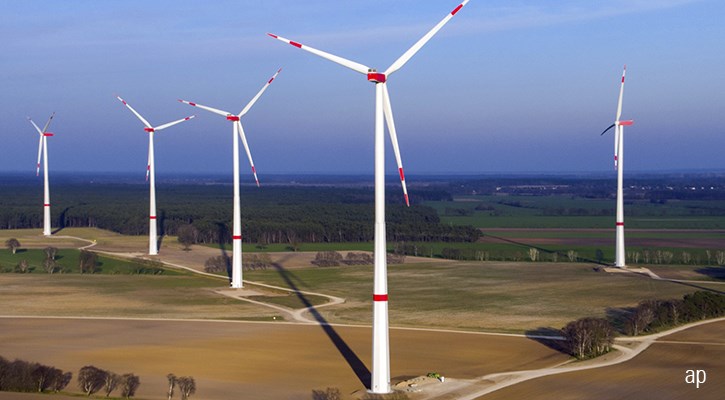
In the March 2021 Budget, the UK Government set out plans to issue its first green bond this year, with the aim of issuing a minimum £15 billion of debt before the end of the 2021-2022 financial year.
Issued in October, its second iteration has already raised £16 billion. But the country is playing catch-up with the rest of continental Europe, where countries like Luxembourg and Lithuania have already issued debt tied to the low-carbon transition.
The UK’s first green gilt was issued on September 2021, and like many green bonds it was massively oversubscribed, raising £10 billion. The bond matures on July 31, 2033, offering a fixed rate to investors over 12 years.
At the time, Chancellor Rishi Sunak said the money raised would be used to fund zero-emissions buses, offshore wind farms and schemes to decarbonise homes and buildings. While the UK is not the first country to issue a green bond, it is the first to report on the environmental and social impact of the schemes it has funded. The September bond issue was closely followed by another £6 billion 32-year bond that matures on July 31, 2053 – which is just after the UK (in theory) has gone “net zero” (read my colleague Dan Lefkovitz's take on why net zero commitments are not enough). It is the longest-dated green bond issued by a government so far. Overall, France and Sweden are ahead of the UK in terms of aoumts raised (in euros). The European Union, as a "supranational" entity, overshadows all of the individual countries in terms of green bond issuance. It has issued €135 billion euros in green bonds so far, which would put the EU at the very far end of the chart below.
Interest Rates Disappoint
Such gilts are targeted to institutional investors like funds and pension schemes, so where does this leave the consumer? These green bonds are linked to those issued by Treasury-backed NS&I, which went on sale to retail savers on October 22 this year. There was a flurry of excitement when the green retail bond was announced. There is a shortage of products with decent yields in the UK. In theory, it was the perfect time for ESG investors to put their money to good use.
The rate, 0.65% over three years, was a disappointment when it was announced, however. AJ Bell head of personal finance Laura Suter captured that feeling of deflation. “Why would savers lock their money away for three years for the same interest rate they can currently get in an easy-access savings account? This equation makes even less sense now the nation is looking down the barrel of an interest rate rise from the Bank of England, which will lead to a hike in savings rates.” Better summaries were few and far between.
What Are Green Bonds?
My colleague Jose Garcia Zarate, who is associate director of passive strategies research for Morningstar Europe, wrote a detailed explainer on green bonds this summer. He says that the first green bond was issued by the European Investment Bank in 2007, and green bonds have made up a tiny amount of the debt market then. Since 2016 the market has expanded significantly, with the bulk of green bond issuance coming from Europe. This is being driven by regulatory and policy events like the Paris Agreement and the European Green Deal. Total green bond issuance is expected to hit $500 billion this year, making the market worth more than $1 trillion. So how are green bonds different from regular bonds? After all, the UK Government has been issuing bonds for centuries to fund wars, imperial expansion, and domestic infrastructure projects like the M25.
What sets green bonds apart are that they have to be used for ESG projects (although this is a wide definition). Each must include a detailed project outline, progress reports, and impact analysis.
Zarate adds that fund managers often buy bonds to complement existing fixed income assets.
“The current structure of the market mean that allocation to green bond funds is driven by investors’ desire to add an impact sleeve to their portfolios rather than a substitute for traditional fixed-income holdings,” he says. Green bond funds are starting to proliferate, and due to the EU's dominance in this area, are typically denominated in euros.




























